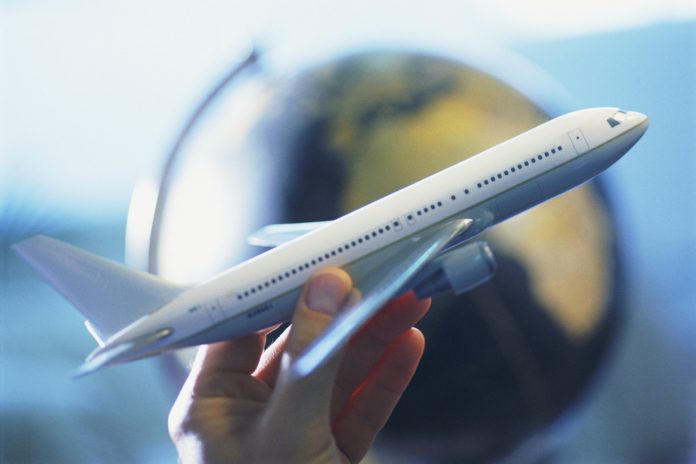This article is written by Akshat Kothari.
Table of Contents
Introduction
The very term “air law” is debatable and uncertain; however, it has been utilizing by and by for longer than a century. It was seemingly proposed, in its French structure, by Professor Ernest Nys of the University of Brussels in 1902 in his report to the Institute de Droit International regarding the matter “droit et aerostats.” In this time–a year prior to the Wright siblings flew their first heavier-then-air machine–the developing activity of balloons, airships and zeppelins pulled in the consideration of the main legitimate researchers around the globe.
It is fair to infer that the expression “air law” from its initiation was restricted distinctly to the legitimate guideline of social relations produced by the aeronautical utilization of the air space. The expression “aeronautical law” would be more exact however a hundred years of basic utilization of the expression “air law” ought to be regarded and any phrased questions, debates are of no viable importance.
“Air law” isn’t a self-ruling branch in the arrangement of law but instead an even-minded conglomeration–a choice and gathering of rules from various parts of law significant for flight a determination for a deliberate order and investigation, proficient specialization and educational purposes.
Historical background of Aviation law
The context of origin and the causes of any law’s evolution help to illustrate the social and cultural framework and could assist in better understanding and interpretation of the rules. However, in a modern treatise of air law these issues hardly deserve more than a brief comment. Law governing could not have existed before the humans started to learn the art of aerial navigation and before the practice of that art created social relations and possible social conflicts of interests that required legal regulation.
In the second half of the 18th century humanity encountered the first human flight –only years before the French revolution and the American war of autonomy. The hot air balloon developed by brothers Josef-Michel and Etienne-Jacques Montgolfier took off in Annonay on 4 June 1783, in Versailles on 19 September 1783 and in Paris on 21 November 1783 with a human crew. That is by all accounts the absolute first genuine hint of air law ever a restriction planned for ensuring the safety of people and property on the ground.
On 25 July, 1909, a French pilot, Louis Bleriot crossed the English Channel between Les Barraques, France, and Dover, England–a distance of 38 km flown in a short time. His airplane, which he assisted with manufacturing, was fueled by a 25-strength three-chamber motor. No legal actions were taken to approve the flight and its landing in an unfamiliar region and Bleriot even did not convey his French visa or some other identification paper.
The activity of states at the beginning of the 20th century is convincingly demonstrated by the shooting down of foreign military balloons suspected to have crossed the national border for “espionage” purposes ( e.g. taking photos of fortifications, etc.) – the primacy of tsarist Russia in defending against “intruders” by shooting down German military balloons in 1904 and 1910.
Paris Conference, 1910
The 1910 Paris International Air Navigation Conference speaks to the primary conciliatory exertion to plan the standards of international law identifying with air navigation. The scholarly thinking about that time focused its consideration on the lawful status of the air space, i.e., regardless of whether the air space is “free” as the high oceans and whether States have some exceptional rights up to a specific height (with relationship to the regional ocean) and whether different states appreciate the privilege of “innocent passage”, and so on.; just barely any creators upheld around then the guideline of complete sovereign rights of States over the air space over their territory.
However, the Conference carefully stayed away from the issues identifying with the overall lawful status of the air space or, all the more explicitly, regardless of whether the air space was a piece of the sovereign territory of the subjacent States or whether it was free to be utilized by any State with no impediments.
Paris Convention, 1919
The Paris Peace Conference of 1919 made an Inter-Allied Aeronautical Commission that was to believe the limits on commercial aviation to be permitted to the defeated Germany in the universal war – I. Also, the Commission was welcome to set up a Convention on international aerial navigation in the peace of harmony recognition that flying had become a developing innovation requiring explicit worldwide lawful regulation “to prevent controversy” and “to encourage the peaceful intercourse of nations by means of aerial communications”.
The Convention is traditionally the first international multilateral instrument relating to air navigation. It also helped to formulate the concepts of contracting states’ domestic law, many of which had no legislation regulating aviation by 1919. The Paris Convention of 1919 is no longer in effect and is now part of history. However, its pioneering contribution to the formulation of some basic concepts of air law survives and maintains its relevance.
Chicago Convention, 1944
On 11 September, 1944, the President of the United States invited representatives of 54 nations to meet at an International Civil Aviation Conference in Chicago from 1 November to 7 December, 1944 to “make preparations for the immediate establishment of provisional air routes and services” and to “discuss the principles and methods to be adopted in the adoption of a new aviation convention.” It thus belongs to the most generally accepted multilateral law-making conventions. The Convention is a monumental piece of international law-making drafted with great foresight.
The Chicago Convention is a constituent instrument of the International Civil Aviation Organization (ICAO); the “relevant rules of the organization” mentioned in Article 5 of the Vienna Convention would be those referring to the procedure for the amendment of the Convention through the mechanism of the ICAO Assembly under its applicable rules. The general rules of the law of treaties, including questions of interpretation, apply to the Chicago Convention.
It is noteworthy that the Chicago Convention is almost symmetrically divided into two separate segments: the first (roughly Article 1 to 42, PART I., Chapters I to VI) represents an exhaustive codification and unification of public international law that replaces all previous sources of international law–the Paris Convention of 1919 and the Havana Convention of 1928. The second part (roughly Articles 43 to 96–PARTS II, III and IV, Chapters VII to XXII) represents a constitutional instrument of the International Civil Aviation Organization (ICAO)–a charter under which the organization was created and under which it is obliged to act.
The provisions of the Convention are mandatory since there is no provision permitting any reservations to the Convention. The mandatory nature of the Convention is underlined by Article 82 in which contracting States committed themselves to abrogate any in consistent obligations and understandings and not to enter any such obligations or understandings.
International Civil Aviation Organization
The Convention on International Civil Aviation, drafted by 54 nations in 1944, is a specialized agency of the United Nations, was formed to encourage cooperation and “build and maintain peace and understanding among the nations and peoples of the world.” More widely known today as the ‘Chicago Convention,’ this landmark agreement laid down the core principles for international air travel, and led to the creation of the specialized agency which has overseen it ever since – the International Civil Aviation Organization (ICAO).
Conclusion
The world has changed drastically in many ways – strategic, technological, social, and economic – over the last more than sixty years. Many new States also appeared on the world map that by 1944 had not existed as independent entities. For over forty years, Cold War has characterized the relationships around the world and its end presents many new opportunities and challenges. The aviation technology progressed from the DC-3 – the civil aviation workhorse by 1944 – to several-generation jet aircraft that followed each other at a rapid rate, including the large-capacity aircraft capable of reaching any point on earth without refueling; supersonic flight was tested as theoretically feasible, but not yet economical as a means of mass transport.
The world progresses towards globalized economy in which the national borders and the nationality marks of aircraft would have only diminishing relevance. New problems and challenges have arisen that could not before seen more than seventy years ago–criminal acts against the safety of civil aviation, growing concern for the environmental protection, application of space technology for air traffic management, growing need for technical cooperation or assistance to assure global safety of civil aviation, electronic data processing that finds its application in airline management processes and also could change the working methods of the ICAO Secretariat, etc.
It may be argued that there is no need for any general review of the Convention, as it has served ICAO well for nearly 70 years and can handle any new developments or contingencies flexibly through interpretation. On the other hand, it can be argued that “creative” interpretation may go against the Convention’s original meaning, misrepresent the reach of the States’ consensus or lead to a lack of the legal certainty that it is supported by all contracting states.
LawSikho has created a telegram group for exchanging legal knowledge, referrals and various opportunities. You can click on this link and join:
 Serato DJ Crack 2025Serato DJ PRO Crack
Serato DJ Crack 2025Serato DJ PRO Crack











 Allow notifications
Allow notifications



